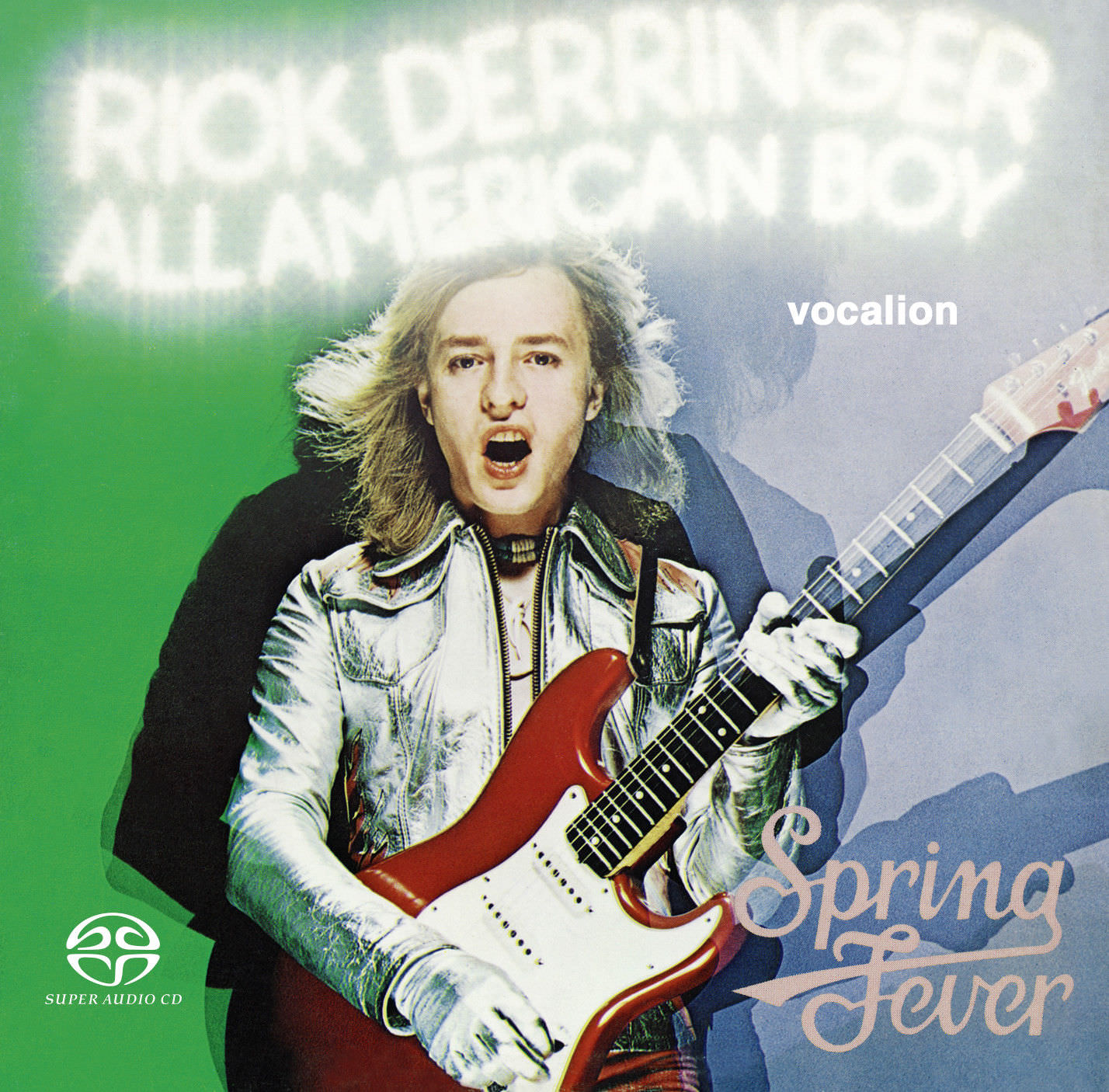Please post your thoughts and comments on this Multichannel SACD release from Dutton Vocalion of the two classic Rick Derringer albums "All American Boy" and "Spring Fever". This Multichannel SACD release features the Quadraphonic mixes of both albums, available commercially for the first time since the 1970s!
Both Quadraphonic mixes are also available to stream in Dolby Audio via Apple Music:
https://music.apple.com/us/album/all-american-boy-expanded-edition/1480869196https://music.apple.com/us/album/spring-fever-expanded-edition/1479110238



All American Boy
LP KZ 32481 (1973) STEREO/ZQ 32481 QUADRAPHONIC
1: ROCK AND ROLL, HOOCHIE KOO (Derringer)
2: JOY RIDE (Derringer)
3: TEENAGE QUEEN (Derringer)
4: CHEAP TEQUILA (Derringer)
5: UNCOMPLICATED (Derringer)
6: HOLD (Derringer; Smith)
7: THE AIRPORT GIVETH (THE AIRPORT TAKETH AWAY) (Derringer)
8: TEENAGE LOVE AFFAIR (Derringer)
9: IT’S RAINING (Derringer)
10: TIME WARP (Derringer)
11: SLIDE ON OVER SLINKY (Derringer)
12: JUMP, JUMP, JUMP (Derringer)
Arranger (strings): Paul Harris
Spring Fever
LP PZ 33423 (1975) STEREO/PZQ 33423 QUADRAPHONIC
13: GIMME MORE (Derringer)
14: TOMORROW (Derringer)
15: DON’T EVER SAY GOODBYE (Derringer)
16: STILL ALIVE AND WELL (Derringer)
17: ROCK (Derringer)
18: HANG ON SLOOPY (Russell; Farrell)
19: ROLL WITH ME (Derringer)
20: WALKIN’ THE DOG (Thomas)
21: HE NEEDS SOME ANSWERS (Derringer)
22: SKYSCRAPER BLUES (Derringer)
Recorded at The Record Plant, New York [13-16, 18-22]; Caribou Ranch, Colorado & The Record Plant, New York [17]
Multi-ch Stereo
All tracks available in stereo and multi-channel
SA-CD
This hybrid CD can be played on any standard CD players
CDSML8540


Both Quadraphonic mixes are also available to stream in Dolby Audio via Apple Music:
https://music.apple.com/us/album/all-american-boy-expanded-edition/1480869196https://music.apple.com/us/album/spring-fever-expanded-edition/1479110238
All American Boy
LP KZ 32481 (1973) STEREO/ZQ 32481 QUADRAPHONIC
1: ROCK AND ROLL, HOOCHIE KOO (Derringer)
2: JOY RIDE (Derringer)
3: TEENAGE QUEEN (Derringer)
4: CHEAP TEQUILA (Derringer)
5: UNCOMPLICATED (Derringer)
6: HOLD (Derringer; Smith)
7: THE AIRPORT GIVETH (THE AIRPORT TAKETH AWAY) (Derringer)
8: TEENAGE LOVE AFFAIR (Derringer)
9: IT’S RAINING (Derringer)
10: TIME WARP (Derringer)
11: SLIDE ON OVER SLINKY (Derringer)
12: JUMP, JUMP, JUMP (Derringer)
Arranger (strings): Paul Harris
Spring Fever
LP PZ 33423 (1975) STEREO/PZQ 33423 QUADRAPHONIC
13: GIMME MORE (Derringer)
14: TOMORROW (Derringer)
15: DON’T EVER SAY GOODBYE (Derringer)
16: STILL ALIVE AND WELL (Derringer)
17: ROCK (Derringer)
18: HANG ON SLOOPY (Russell; Farrell)
19: ROLL WITH ME (Derringer)
20: WALKIN’ THE DOG (Thomas)
21: HE NEEDS SOME ANSWERS (Derringer)
22: SKYSCRAPER BLUES (Derringer)
Recorded at The Record Plant, New York [13-16, 18-22]; Caribou Ranch, Colorado & The Record Plant, New York [17]
Multi-ch Stereo
All tracks available in stereo and multi-channel
SA-CD
This hybrid CD can be played on any standard CD players
CDSML8540


Last edited:





















